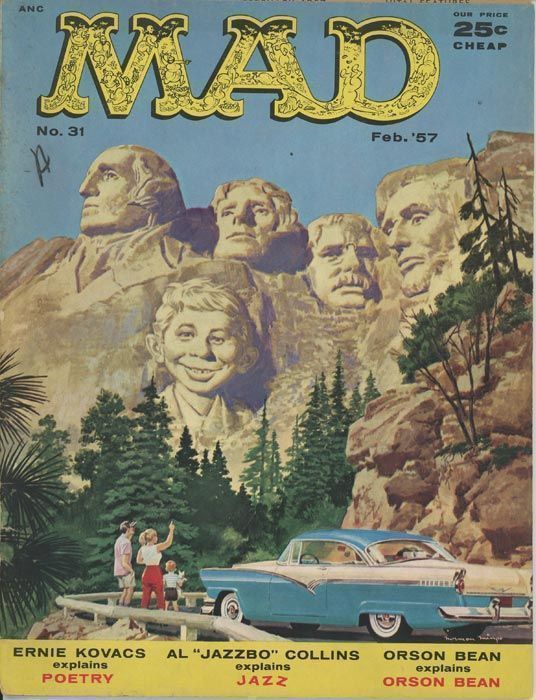A fat cat from Edmonton has made a splash on TikTok for his workout routine. Peaches the Purrmaid, weighing nearly 25 pounds, has been swimming in an effort to lose weight. During the pandemic, owner Chastity Emes attempted to get Peaches to accompany her on walks to drop the weight, but didn’t have much luck. “I had a harness for him and tried to get him out of the condo, and we didn’t make it out of our hallway because he just kind of flopped over and decided it wasn’t going to happen,” Chastity Emes, Peaches’s owner. With walks not being an option, Peaches took up swimming as part of her weight loss journey. Mason DePatie has that story.
Funny
Vintage Mad Magazine Covers
Mad (stylized as MAD) is an American humor magazine founded in 1952 by editor Harvey Kurtzman and publisher William Gaines, launched as a comic book before it became a magazine. It was widely imitated and influential, affecting satirical media, as well as the cultural landscape of the 20th century, with editor Al Feldstein increasing readership to more than two million during its 1974 circulation peak. From 1952 until 2018, Mad had published 550 regular issues, as well as hundreds of reprint “Specials”, original-material paperbacks, reprint compilation books and other print projects. The magazine reverted back to 1 with its April 2018 issue.

Mad’s mascot, Alfred E. Neuman, is typically the focal point of the magazine’s cover, with his face often replacing that of a celebrity or character who is lampooned within the issue.











A more contemporary cover

The Royal Succession
Coarse language: viewer indiscretion is advised.
Tu Youyou
Tu Youyou (Chinese: 屠呦呦; pinyin: Tú Yōuyōu; born 30 December 1930) is a Chinese pharmaceutical chemist and malariologist. She discovered artemisinin (also known as qīnghāosù, 青蒿素) and dihydroartemisinin, used to treat malaria, a breakthrough in twentieth-century tropical medicine, saving millions of lives in South China, Southeast Asia, Africa, and South America.
For her work, Tu received the 2011 Lasker Award in clinical medicine and the 2015 Nobel Prize in Physiology or Medicine jointly with William C. Campbell and Satoshi Ōmura. Tu is the first Chinese Nobel laureate in physiology or medicine and the first female citizen of the People’s Republic of China to receive a Nobel Prize in any category. She is also the first Chinese person to receive the Lasker Award. Tu was born, educated and carried out her research exclusively in China.

Impatient Dogs Honking Horns
Master, what the hell is taking you so long? I’m hungry.
This one is honking and howling at the same time.
Repartee









Some content on this page was disabled on July 7, 2023 as a result of a DMCA takedown notice from FarWorks, Inc.. You can learn more about the DMCA here: https://wordpress.com/support/copyright-and-the-dmca/


































